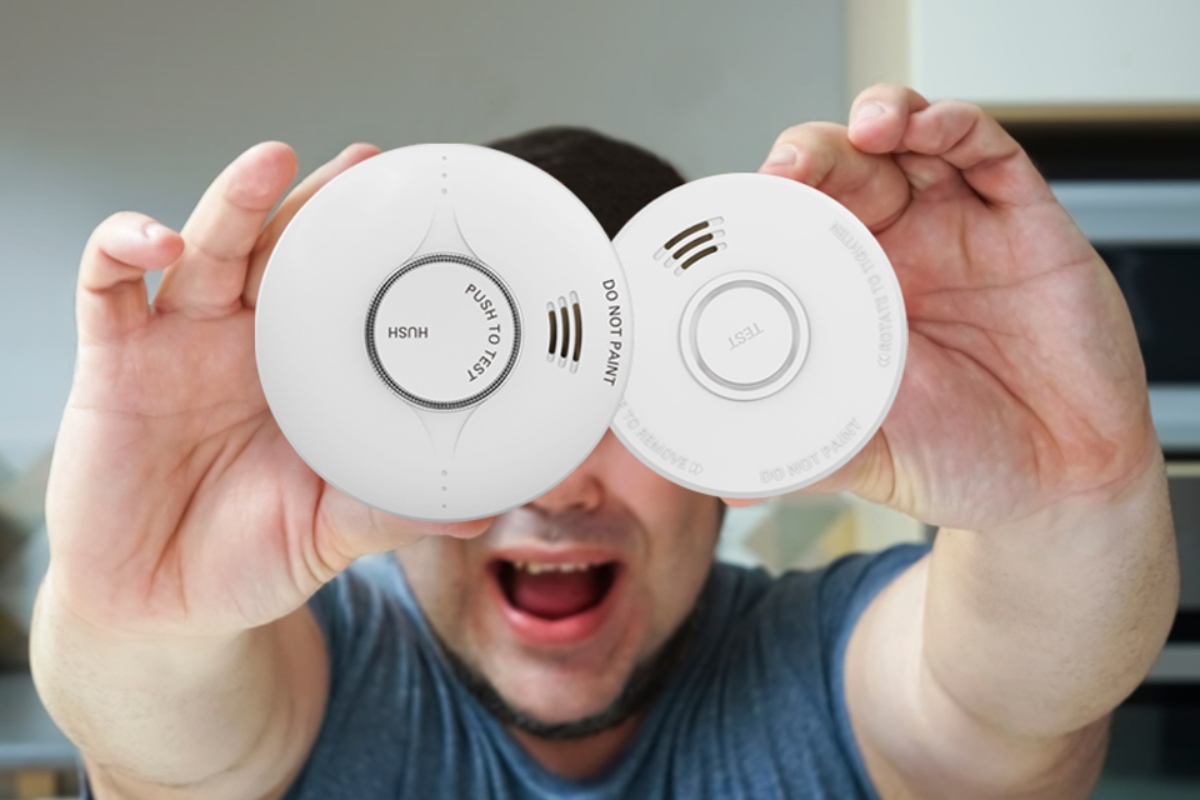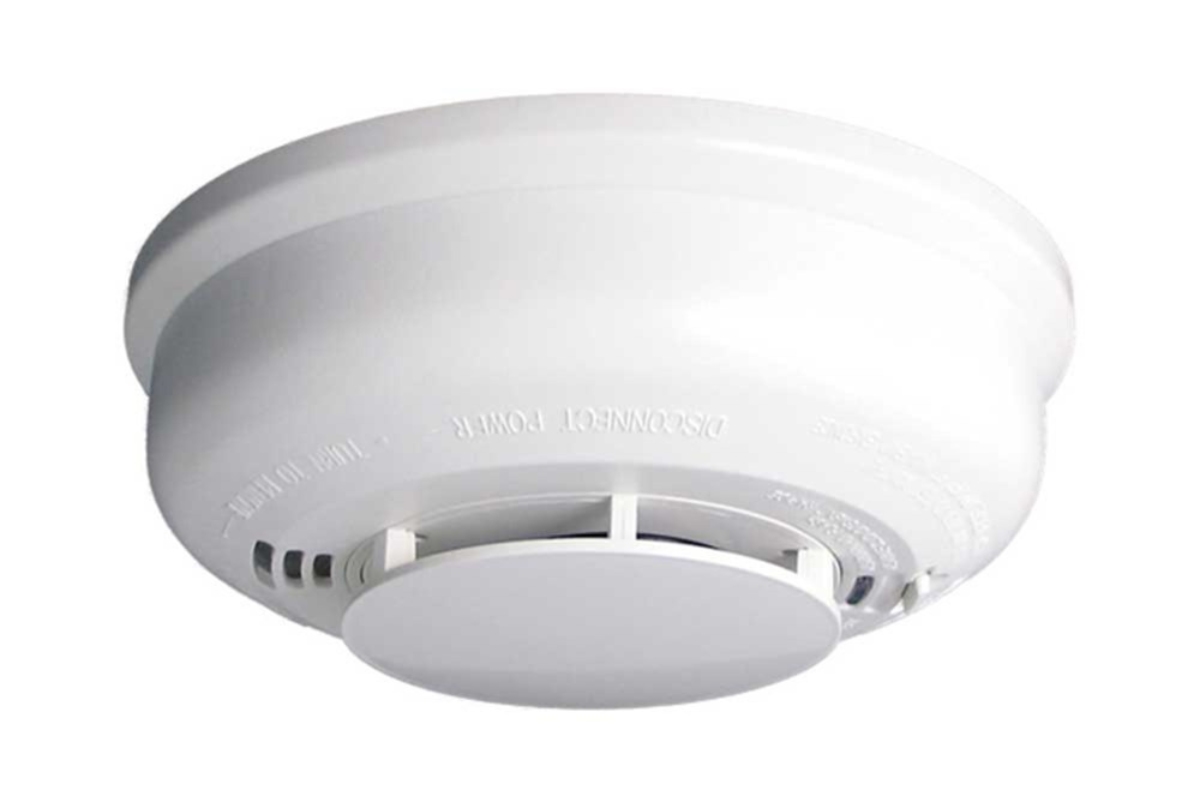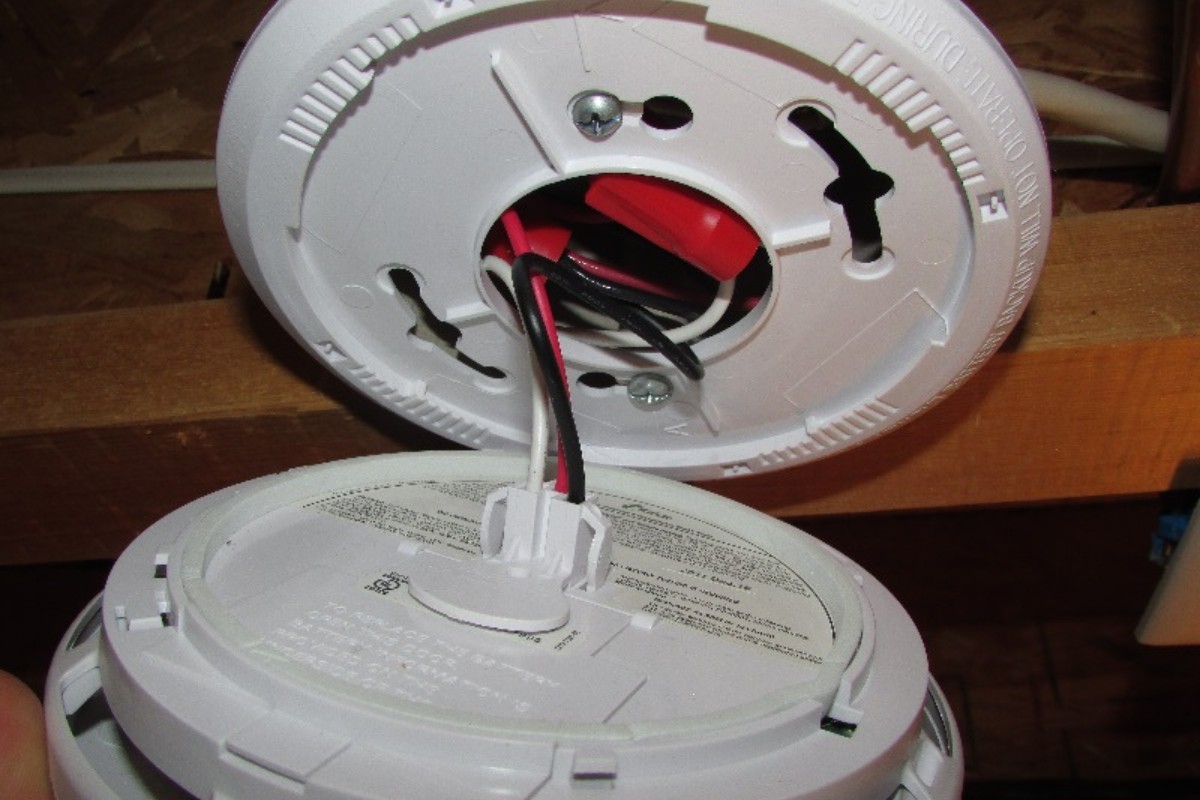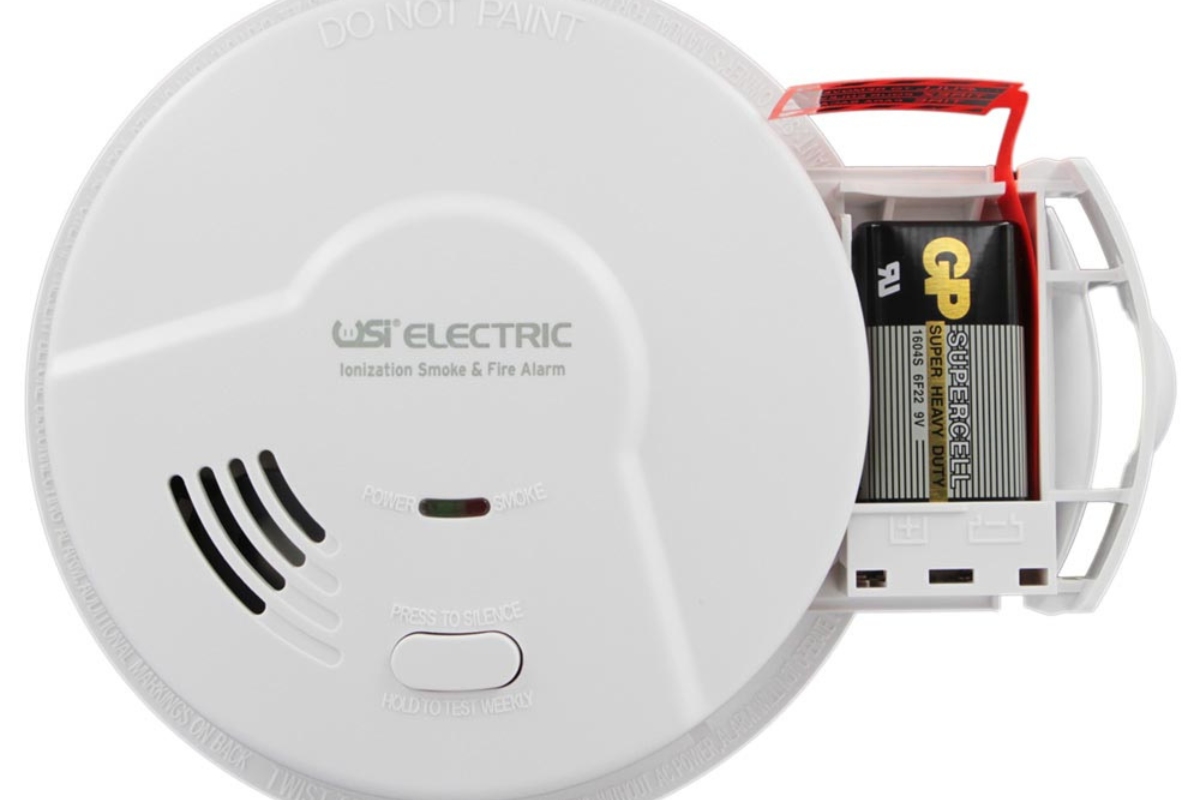Home>Articles>What Is The Difference Between A Smoke Alarm And A Smoke Detector


Articles
What Is The Difference Between A Smoke Alarm And A Smoke Detector
Modified: January 18, 2024
Discover the distinctions between a smoke alarm and a smoke detector in this informative article. Learn how they function and which one is best for your home's safety.
(Many of the links in this article redirect to a specific reviewed product. Your purchase of these products through affiliate links helps to generate commission for Storables.com, at no extra cost. Learn more)
Introduction
Smoke alarms and smoke detectors play a crucial role in fire safety by alerting occupants to the presence of smoke in the event of a fire. While these terms are often used interchangeably, it is important to understand the difference between a smoke alarm and a smoke detector. Both devices serve the same purpose of detecting smoke, but they differ in terms of functionality, power source, types, installation, cost, maintenance, and effectiveness.
In this article, we will explore the distinctions between smoke alarms and smoke detectors to help you make an informed decision about which device is best suited for your home or business.
Key Takeaways:
- Understanding the differences between smoke alarms and smoke detectors is crucial for making informed decisions about fire safety. From functionality to installation, each device offers unique features to protect homes and businesses.
- While smoke alarms are more affordable and suitable for residential properties, smoke detectors provide advanced detection capabilities and are integrated into centralized fire safety systems for larger buildings. Both devices require regular maintenance to ensure effectiveness.
Read more: What Is A Smoke Detector?
Definition and Purpose
A smoke alarm is a device that is designed to detect smoke and emit a loud audible alarm to alert occupants of a potential fire. It is typically smaller in size and is often installed on the ceiling or high on a wall. Smoke alarms are commonly found in residential properties and are required by building codes in many jurisdictions.
A smoke detector, on the other hand, is a sensor that detects smoke particles in the air and sends a signal to a centralized fire alarm system. It is typically part of a larger fire protection system and is commonly used in commercial or larger residential buildings. Smoke detectors are often connected to a control panel that can activate other fire safety measures.
The purpose of both smoke alarms and smoke detectors is to provide early warning in the presence of smoke, allowing occupants to evacuate the premises and notify emergency services. By detecting smoke in its early stages, these devices can significantly reduce the risk of casualties and property damage caused by fires.
Functionality
A smoke alarm operates on simple but effective technology. It contains a smoke sensor that detects the presence of smoke particles. Once smoke is detected, the alarm triggers a loud audible alarm, usually a high-pitched sound, to alert the occupants of the building to the potential danger. The primary function of a smoke alarm is to provide a warning signal that allows people to evacuate before the fire spreads.
On the other hand, a smoke detector is more complex in its functionality. It typically consists of a smoke sensor, a control panel, and interconnected devices. When the smoke detector detects smoke, it sends a signal to the control panel, which in turn activates the alarm system throughout the building. This can include triggering sirens, flashing lights, and even automatically releasing fire suppression systems. Smoke detectors are often integrated into a comprehensive fire safety system, allowing for a coordinated response to fire emergencies.
While both smoke alarms and smoke detectors share the common goal of detecting smoke, the key difference lies in the scale and functionality of the devices. Smoke alarms are standalone units that provide localized warnings, while smoke detectors are part of a larger system that can provide centralized notifications and control measures.
Power Source
Smoke alarms and smoke detectors differ in terms of their power source. A smoke alarm typically operates on battery power or may be hardwired into the electrical system of a building. Battery-powered smoke alarms are easy to install and maintain, making them a popular choice for residential properties. These alarms require regular battery checks and replacement to ensure they remain operational. Hardwired smoke alarms, on the other hand, are directly connected to the electrical system of the building and often have a backup battery in case of a power outage.
Smoke detectors, being part of a larger fire safety system, are commonly hardwired into the building’s electrical system. They are typically connected to a central control panel and may have backup batteries to ensure continuous operation during power outages. The hardwired nature of smoke detectors ensures a reliable power source and eliminates the need for regular battery replacements.
It’s important to note that some smoke alarms and smoke detectors can also be powered by a combination of battery and hardwired sources, providing a backup power supply in case one source fails.
Ultimately, the choice between a battery-powered smoke alarm or a hardwired smoke detector depends on the specific requirements of the building and the desired level of fire safety.
Types
When it comes to types, smoke alarms and smoke detectors offer a range of options to suit different needs and preferences.
Smoke alarms are available in two main types: ionization smoke alarms and photoelectric smoke alarms.
- Ionization smoke alarms: These alarms use a small amount of radioactive material to ionize the air in the sensing chamber. When smoke enters the chamber, it disrupts the flow of ions, triggering the alarm. Ionization smoke alarms are more responsive to fast-burning, flaming fires.
- Photoelectric smoke alarms: These alarms use a light source and a sensor to detect smoke particles. When smoke enters the chamber, it scatters the light, activating the sensor and triggering the alarm. Photoelectric smoke alarms are more effective in detecting slow, smoldering fires.
Smoke detectors also come in various types, depending on their intended application and the specific fire safety system they are part of:
- Conventional smoke detectors: These detectors are typically used in commercial or larger residential buildings. They are wired to a control panel and cover specific zones or areas within the building. When smoke is detected, the control panel identifies the affected zone, providing localized information for emergency response purposes.
- Addressable smoke detectors: These detectors are similar to conventional smoke detectors but have the ability to provide more detailed information. Each detector has a unique address, allowing the control panel to pinpoint the exact location of the detected smoke. This information is helpful for emergency responders in determining the source of the fire.
- Aspirating smoke detectors: These detectors use a network of pipes and a fan to draw air samples into a detection unit. The unit analyzes the air for the presence of smoke particles and triggers an alarm if smoke is detected. Aspirating smoke detectors are highly sensitive and often used in environments where early detection is critical, such as data centers and laboratories.
Choosing the right type of smoke alarm or smoke detector depends on factors such as the size and layout of the building, the anticipated fire risks, and the desired level of detection accuracy.
A smoke alarm is a stand-alone device that detects smoke and sounds an alarm, while a smoke detector is part of a larger fire alarm system and may not have a built-in alarm. Make sure to have both in your home for maximum safety.
Installation
The installation process for smoke alarms and smoke detectors may vary depending on the type and model, but generally follows these guidelines:
For smoke alarms:
- Select an appropriate location: Smoke alarms should be installed on the ceiling or high on the wall, preferably near bedrooms or in common areas. Avoid installing them near windows, doors, or ventilation openings.
- Check the manufacturer’s instructions: Follow the specific instructions provided by the manufacturer for proper installation. This may include drilling holes, using screws or adhesive mounts, or simply sticking the alarm to the desired location.
- Test the alarm: Once installed, test the smoke alarm to ensure it is functioning correctly. Press the test button on the alarm to activate the alarm sound.
- Regular maintenance: It is important to regularly test your smoke alarms and replace the batteries as needed. Most manufacturers recommend testing the alarms monthly and replacing the batteries twice a year, or as directed by the manufacturer.
For smoke detectors:
- Hire a professional: Smoke detectors, especially those integrated into a larger fire safety system, typically require professional installation. Contact a licensed fire safety technician or electrician to ensure proper installation and compliance with local building codes.
- Connect to the control panel: The smoke detector will need to be wired to the central control panel of the fire safety system. This may involve running wires through the walls and ceiling or connecting them to existing wiring in the building.
- Test the system: Once installed, the smoke detector should be tested along with the entire fire safety system to ensure proper communication and coordination between the devices.
- Regular maintenance: Smoke detectors should be included in the regular maintenance schedule of the fire safety system. It is essential to follow the manufacturer’s guidelines and schedule maintenance with a qualified professional.
It is always recommended to consult the manufacturer’s instructions or seek professional assistance to ensure proper installation and functionality of smoke alarms and smoke detectors.
Cost
The cost of smoke alarms and smoke detectors can vary depending on several factors:
Smoke alarms, being standalone units, are generally more affordable compared to smoke detectors. The price of a smoke alarm can range from $10 to $50, depending on the brand, features, and additional functionalities. Battery-powered smoke alarms are generally less expensive than hardwired ones, as they do not require professional installation.
On the other hand, smoke detectors, being part of a larger fire safety system, are often more expensive. The cost of smoke detectors depends on factors such as the type and sophistication of the system, the number of detectors required, and the complexity of the installation. A basic smoke detector in a commercial or larger residential building can cost between $50 and $200. However, more advanced systems, such as addressable or aspirating smoke detectors, can have higher costs due to their specialized functionality and installation requirements.
In addition to the initial purchase cost, it is important to consider the long-term expenses associated with smoke alarms and smoke detectors. This includes the cost of batteries for smoke alarms, as well as regular maintenance and inspections for smoke detectors. Proper maintenance and timely replacement of batteries or faulty components are crucial to ensure the devices are in working order.
It’s important to keep in mind that the cost of smoke alarms and smoke detectors should be seen as an investment in fire safety. The upfront costs may be relatively small compared to the potential loss of life and property in the event of a fire. Therefore, it is recommended to choose devices that meet appropriate safety standards and requirements, prioritizing reliability and effectiveness over cost.
Maintenance and Battery Replacement
Regular maintenance and battery replacement are crucial for the proper functioning of smoke alarms and smoke detectors.
For smoke alarms:
It is recommended to perform the following maintenance tasks:
- Test the alarm: Test your smoke alarms monthly by pressing the test button to ensure they are working correctly. If the alarm does not sound, replace the batteries.
- Replace batteries: Smoke alarms usually operate on batteries, and it is important to replace them regularly. Most manufacturers recommend changing the batteries twice a year or as directed by the manufacturer. Consider using long-life lithium batteries for increased durability.
- Clean the alarm: Dust, dirt, and debris can accumulate in the smoke alarm over time, affecting its performance. Gently vacuum or wipe the exterior of the alarm to remove any buildup that may hinder its operation.
- Replace old alarms: Smoke alarms have a limited lifespan, typically around 10 years. Check the manufacturer’s instructions for the recommended lifespan of your specific model. Replace the smoke alarm if it is beyond its expiration date.
For smoke detectors:
Since smoke detectors are typically part of a larger fire safety system, their maintenance is often performed by professionals. Regular inspections and maintenance of the system ensure its proper functioning. Some key points to consider for smoke detectors maintenance include:
- Regular inspections: Schedule regular inspections of the smoke detectors and the entire fire safety system by a qualified technician. This ensures that all components are functioning correctly and that any issues are identified and addressed promptly.
- Test the system: Test the smoke detectors as part of the overall fire safety system testing. This should be done according to the manufacturer’s recommended guidelines or as directed by the technician.
- Replace faulty components: If any issues or malfunctions are detected during inspections or testing, it is important to replace or repair the faulty components as soon as possible to maintain the integrity of the fire safety system.
- Keep records: Document all maintenance and inspections performed on the fire safety system, including dates, findings, and any actions taken. These records can be useful for future reference and compliance purposes.
Adhering to a regular maintenance schedule and promptly addressing any issues that arise is crucial for ensuring the reliability and effectiveness of smoke alarms and smoke detectors in detecting and alerting occupants to the presence of smoke in case of a fire.
Effectiveness
Both smoke alarms and smoke detectors are designed to detect smoke and provide early warning in the event of a fire. Their effectiveness in detecting and alerting occupants to the presence of smoke can vary based on several factors:
Smoke alarms: Smoke alarms, especially the ones equipped with both ionization and photoelectric sensors (dual-sensor alarms), are highly effective in detecting different types of fires. Ionization alarms are more responsive to fast-burning, flaming fires, while photoelectric alarms are more effective in detecting slow, smoldering fires. By combining both types of sensors, dual-sensor alarms provide a higher level of accuracy and effectiveness in detecting a wide range of fire conditions.
However, it is important to note that no smoke alarm can provide 100% foolproof detection. Factors such as the location of the alarm, proper installation, regular maintenance, and the presence of smoke obstruction can influence its effectiveness. Therefore, it is recommended to install multiple smoke alarms in different areas of the building to ensure comprehensive coverage.
Smoke detectors: Smoke detectors, being part of a larger fire safety system, are designed to provide more advanced and centralized detection capabilities. They can detect smoke in various areas of a building and transmit signals to a central control panel, which then activates the necessary alarm and response measures.
Smoke detectors, especially addressable smoke detectors, provide precise information on the location of the smoke source within the building. This information is crucial for emergency responders to quickly identify the affected area and take appropriate action.
However, the effectiveness of smoke detectors relies on proper installation, regular maintenance, and integration with the fire safety system. Regular inspections and testing of smoke detectors, along with the overall fire safety system, ensure their reliability and functionality.
It is important to remember that both smoke alarms and smoke detectors are only effective if they are properly installed, regularly tested, and well-maintained. All occupants should be familiar with the sound of the alarms or the response protocols linked to the fire safety system, enabling them to quickly evacuate the building in case of an emergency.
Ultimately, the effectiveness of smoke alarms and smoke detectors in saving lives and minimizing property damage in the event of a fire relies on the diligence of the occupants in maintaining and responding to fire safety measures.
Read more: Why Do Smoke Detectors Give False Alarms?
Conclusion
Smoke alarms and smoke detectors are essential devices for fire safety, but they have distinct differences in their functionality, power source, types, installation, cost, maintenance, and effectiveness. Understanding these differences can help you make informed decisions when it comes to protecting your home or business.
Smoke alarms, commonly found in residential properties, are standalone units that detect smoke and emit loud audible alarms to alert occupants. They are typically powered by batteries or hardwired into the electrical system. There are two main types of smoke alarms: ionization alarms and photoelectric alarms, each designed to detect different types of fires.
Smoke detectors, on the other hand, are part of larger fire safety systems commonly found in commercial or larger residential buildings. They are hardwired into the electrical system and connected to a control panel. Smoke detectors come in various types, including conventional detectors, addressable detectors, and aspirating detectors, each offering different levels of detection accuracy.
Proper installation, regular maintenance, and battery replacements are crucial for both smoke alarms and smoke detectors. It is important to test smoke alarms regularly, replace batteries, and clean the units to ensure their reliability. Smoke detectors should be inspected by professionals and incorporated into a comprehensive maintenance schedule for the entire fire safety system.
While smoke alarms are more affordable and suitable for most residential properties, smoke detectors provide more advanced detection capabilities and are integrated into a centralized fire safety system.
In conclusion, whether you choose a smoke alarm or a smoke detector, prioritizing fire safety is essential. By installing and maintaining these devices correctly, you can enhance the safety of your home or business and provide early warning in the event of a fire. Be sure to follow the manufacturer’s instructions, local building codes, and seek professional assistance as needed to ensure optimal performance.
Frequently Asked Questions about What Is The Difference Between A Smoke Alarm And A Smoke Detector
Was this page helpful?
At Storables.com, we guarantee accurate and reliable information. Our content, validated by Expert Board Contributors, is crafted following stringent Editorial Policies. We're committed to providing you with well-researched, expert-backed insights for all your informational needs.














0 thoughts on “What Is The Difference Between A Smoke Alarm And A Smoke Detector”